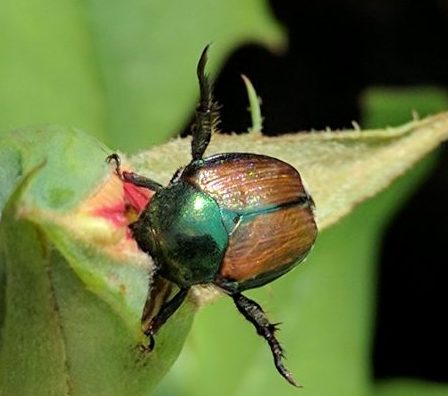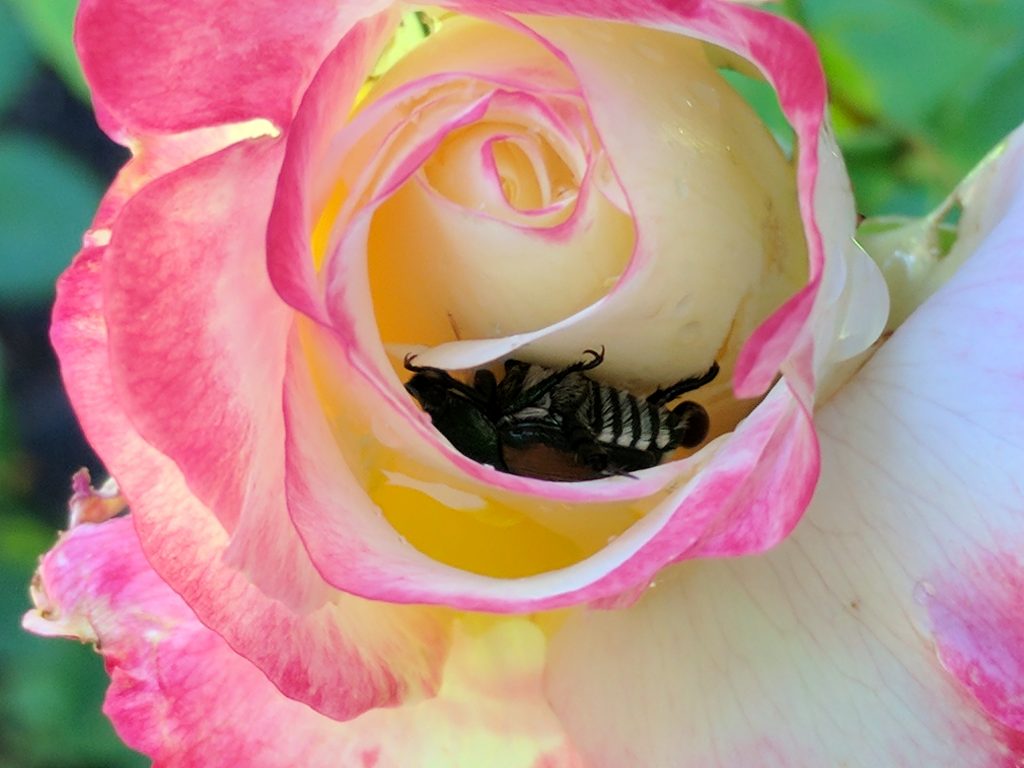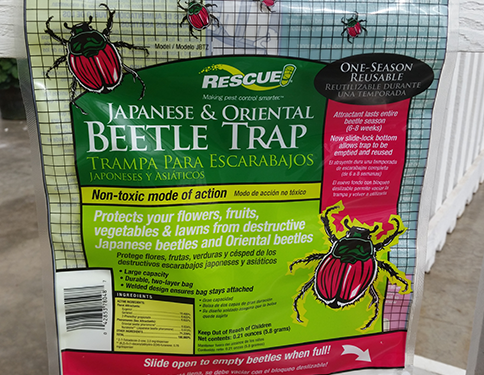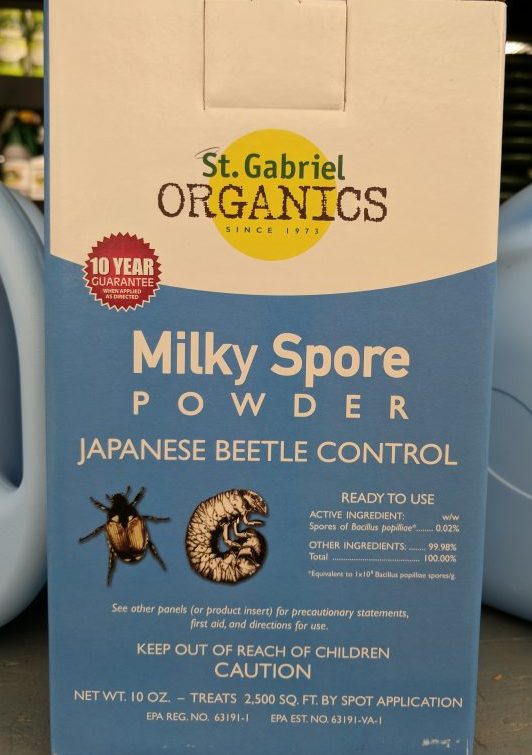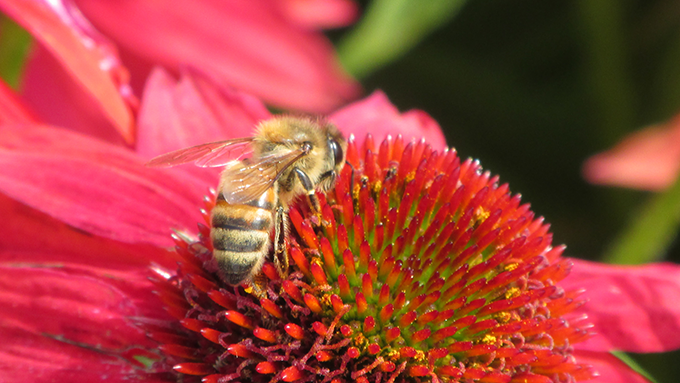As we plan for our summer garden, we should also think about the insects that may be gardening with us… both the “good” bugs and the “bad” bugs.
Perhaps the baddest of the bad lately is the Japanese beetle. A lot of insect pests run in cycles…. heavier some seasons…. not as bad in others. But it looks like the Japanese beetles’ invasion along the Front Range is likely to get worse before it gets better.
Just a matter of time?
If you haven’t had Japanese beetles chowing down on your landscape yet then maybe you’re not growing any of their favorite plants. Roses, grape vines, Virginia creeper, hollyhocks, linden trees…. the beetles’ menu is a long one and includes lot of terrific plants that we love.
Not planting their favorite plants is one way to avoid the damage. But if you are growing any of the 300 or so plants they can’t seem to resist, then it’s probably just a matter of time ’til they show up in your yard.
Tagawa Gardens is here to help!
Tagawa will be holding two free classes to help you understand the best techniques for managing this pest. (Note that I say “manage,” because eradicating Japanese beetle along the Front Range isn’t likely to happen.)
The classes are this Saturday, February 24 and Saturday, March 24. Both start at ten a.m. The classes will focus on how to fight back against Japanese beetles, when they’re most vulnerable and which products work (and don’t work) in the battle.
Many of the details that will be included in the classes are also laid out in detail in a previous blog.
One of the best techniques is one of the simplest
Hand-picking the beetles and quickly flicking them into a small bucket of soapy water is proving to be one of the most effective (and least expensive!) ways to fight Japanese beetles. The beetles are slowest and easiest to sneak up on when it’s cool, shortly after sunrise and just before sunset. In mid-day when they’re all warmed up and quick to fly, you’ll have a much harder time tapping them off of your plants into a soapy watery doom.
One thing you definitely don’t want to do is squash them! A squashed beetle gives off a potent fragrance that will attract far more beetles than you started out with. Dropping them into soapy water and then flushing the water is your best bet for hand combat.
Japanese beetle traps: yes or no?
As you’ll hear in the upcoming classes, beetle traps will catch beetles. The traps are baited with the alluring fragrances of flowers and Japanese beetle pheromones. The lure is like a shout out to the beetles for blocks away. But there’s a problem. Research indicates that the traps will attract more beetles that you’ll actually catch. That means the beetle population in your yard could go up instead of down.
Instead of hanging the traps to attract and kill Japanese beetles, Colorado State University recommends they be used specifically to monitor for the arrival of the bugs in your yard. The traps should always be placed far away from the plants they’re likely to feed on. You want to know the bugs have shown up without attracting them to your tastiest plants. Once you know the beetles are in the area, you can help stay on top of the damage by checking your vulnerable plants once or twice a day.
Other options for fighting J.B.?
There are some other tactics you can include in your arsenal. The upcoming classes at Tagawa’s will cover these, too.
A bacteria called “milky spore” is one tool. Japanese beetles lay their eggs in well-watered grassy areas, like our lawns. That’s why the beetles are now thriving in urban areas that have lots of well-watered turf.
The milky spore bacteria attacks the grub stage of the beetle and kills it. When each grub dies, it releases millions of new spores into the soil. With time, the soil where the grubs hatch is inoculated against the beetle larva, reducing future infestations.
“Time” is the operative word. It can take several seasons for the bacteria to increase and reach sufficient concentrations to control the grubs. But the good news it you only have to apply it once for the inoculation process to begin.
The upcoming Japanese beetle classes at Tagawa’s will also cover the use of insecticides like permethrin and spinosad. Again, those free classes are this Saturday, February 24th, and again on Saturday, March 24th. Both classes start at 10 a.m.
And on a brighter note….
Fortunately, nasty bugs like Japanese beetles aren’t the only insects visiting our gardens. Wonderful and welcome pollinators like honey bees, native bees and butterflies will also be right at home in a healthy landscape. And don’t forget the hummingbirds, too!
Welcoming these beneficial visitors is the focus of a class this Saturday, February 24th, at noon.
“Gardening for Pollinators” will offer information on which plants appeal to which kinds of pollinators and how to make your garden more inviting. What colors and flower shapes appeal to honey bees? We know hummingbirds love red, but what else can we do to lure these “jewels of the sky?” How important is it to plant for color all season long? And what role do pesticides play in harming these beneficial visitors?
We have plenty of cold weather (and hopefully some snow!) still to come before planting season arrives. That makes now the purr-fect time to do some homework…. take in a few classes at Tagawa’s, and be primed and ready for spring and summer 2018!
https://www.youtube.com/watch?v=a0P8mTjO7oM&list=PLB4xNg-u4mUYAMyi2x0VR0O64oi7a0uzn
